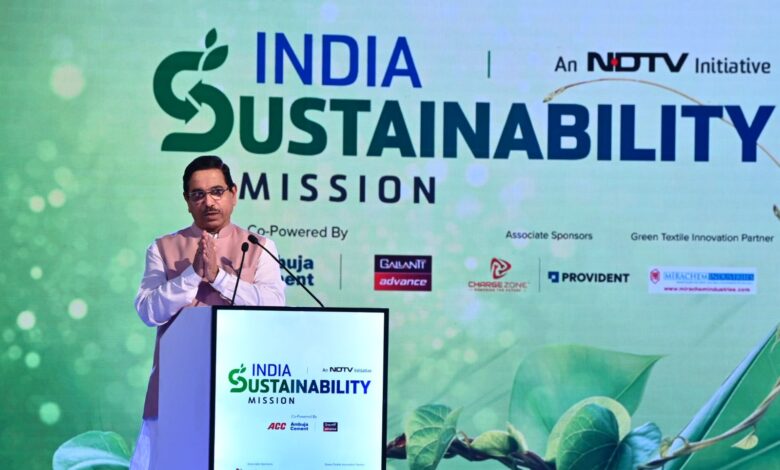
Pralhad Joshi, Minister of New and Renewable Energy, today said that the Centre has spent significantly on sustainable energy for a greener India.
Speaking at the India Sustainability Mission – Conclave, Mr Joshi said, “It is our duty to protect nature. India treats nature as God. Reforms under Prime Minister Narendra Modi’s government in the renewable energy sector have put India very high in the world on several green energy barometers.”
India’s installed renewable energy capacity has surged by an impressive 165 per cent over the past decade, rising from 75.52 GW to over 203 GW, Mr Joshi said. This surge is reflected in the increase in renewable energy generation, which grew from 193.5 billion units (BU) to 360 BU between 2013 and 2024 – an 86 per cent rise.
“The best aspect of the renewable energy growth story is that the solution is being provided not just by the government but also by the business community, consumers and common citizens. The results are starting to show remarkable change – a 165% growth in the last ten years,” he added.
Mr Joshi said that India’s solar power costs are among the lowest in the world, due in part to the country’s abundant sunny days, which contribute to the rapid expansion of the solar industry.
“India is not just another player but we are leading right now. Between 2004 to 2014, the total expenditure on renewable energy was Rs 6,091 crore. Only this year’s budget on renewable energy is Rs 20,000 crore. In the last ten years, we have spent Rs 37,000 crore on renewable energy,” he said.
One of the central challenges to decarbonising India’s electricity grid, according to Mr Joshi, is meeting incremental energy demand entirely through non-fossil fuel sources. To achieve this, the development of large-scale energy storage systems is critical.
The minister revealed that a new policy to promote pumped storage projects (PSPs) is in the pipeline. These projects aim to store surplus electricity and integrate renewable energy sources more efficiently into the national grid, thereby accelerating India’s shift toward a low-carbon economy.
Mr Joshi said under PM Modi’s leadership, not only has India increased its energy output, but the cost of solar energy has also significantly decreased. Solar power tariffs for grid-connected plants dropped by 76% over the last decade, from Rs 10.95 per unit in 2010-11 to Rs 2.60 per unit in 2023-24, making solar energy more accessible and cost-effective for consumers and businesses alike.







